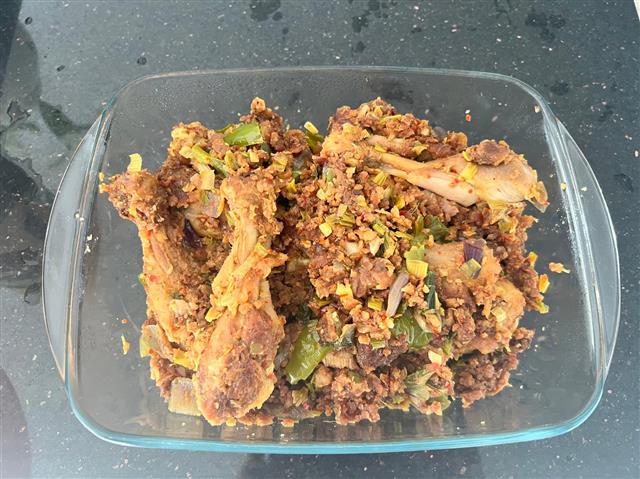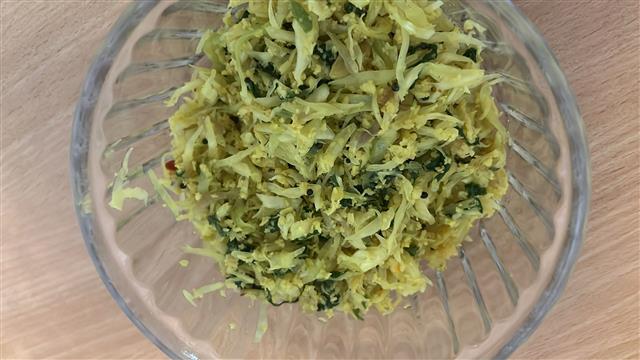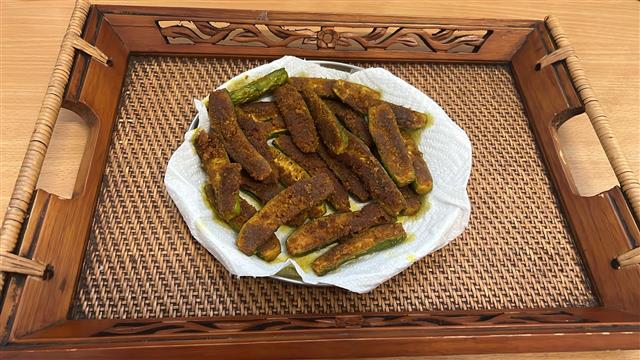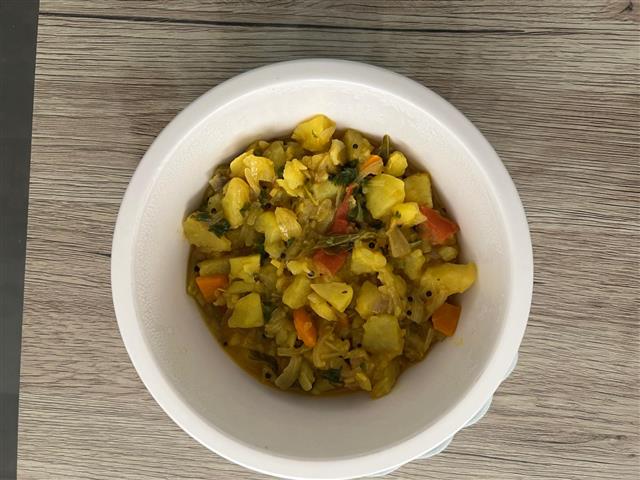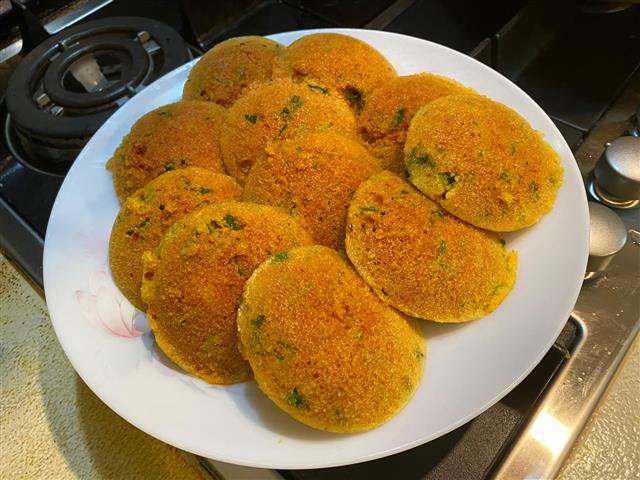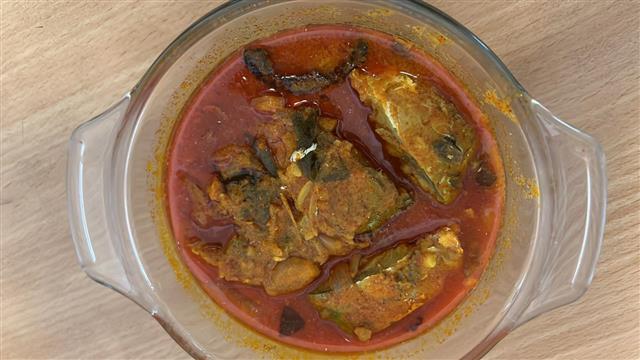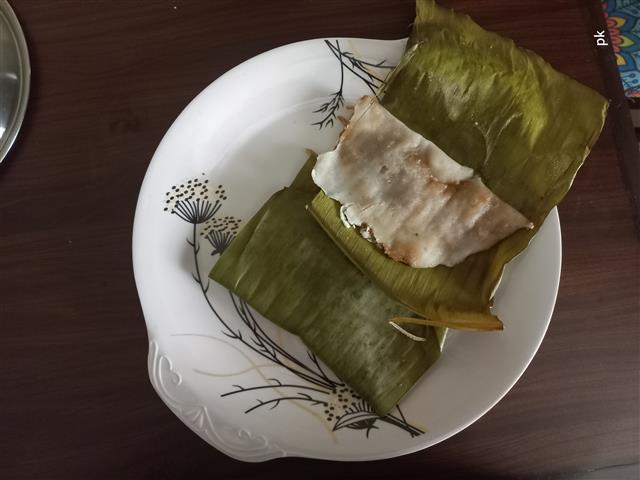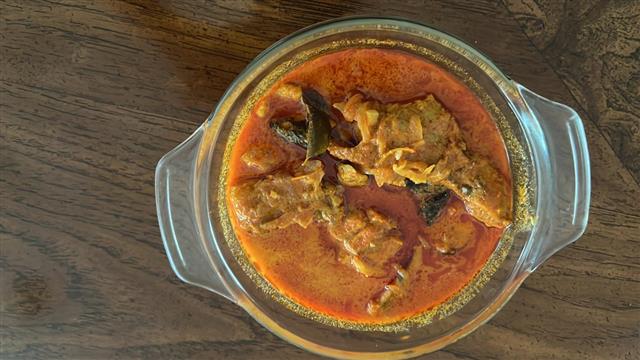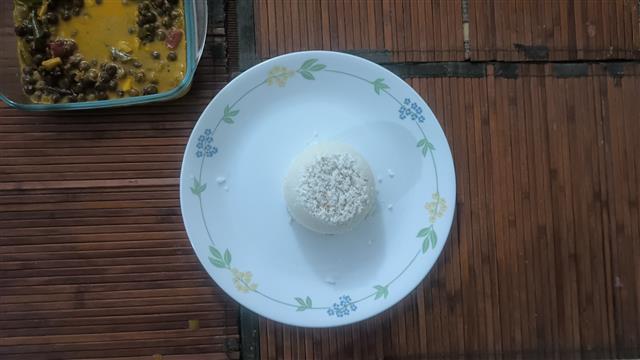
Beetroot Thoran
(4 reviews)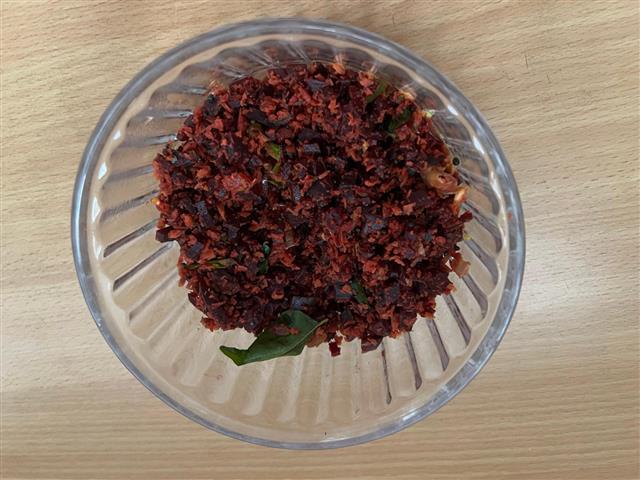
Beetroot Thoran is a dry vegetable stir-fry made with finely chopped beetroot, coconut, shallots and mild spices.
This colourful side dish is part of everyday meals in Kerala. It goes well with rice, dal, or curd-based curries. It's also served during Sadhya.
The sweetness of beetroot and richness of coconut make it a well-loved lunchbox option too.
Ingredients
Directions
- Wash, peel and cut the beetroot into small pieces.
- Heat to the coconut oil and add mustard seeds to it. When the seeds splutter, add onion and green chilli and saute .
- Add the beetroot and cook it. Once the beetroot is cooked, add the crushed coconut, cumin and shallots.
- Mix it well and take it out.
Cooking Tips
• Chop the beetroot small or grate it if you want a faster cook time. The finer the cut, the better the texture.
• Don't add water. Beetroot releases moisture while cooking. Cover and cook on low heat so it steams gently in its own juices.
• Use fresh coconut when possible. Frozen works if it's thawed fully and fluffed.
• Don't overcook. The beetroot should still have a light bite, not be too soft.
• If using shallots, crush them roughly instead of chopping fine. It adds texture and more flavour.
How to Serve
• Pair with hot rice or chapati
• Alongside curry, sambar, or rasam.
• With kanji (rice gruel) for a light and wholesome meal.
• As part of sadya meal
The Story Behind Beetroot Thoran
Beetroot wasn't originally part of Kerala cuisine. It came through colonial trade, and later spread across Indian households. In Kerala, it fit in easily. Home cooks found a way to turn it into a stir-fry using coconut and simple pantry spices.
This thoran dish doesn't need you to grind anything. The flavour comes from sautéed onion or shallots, green chilli, and a final mix of grated coconut with crushed cumin. Some families grate the beetroot, others chop it finely. Both versions taste good and cook quickly.
What is Beetroot Thoran?
Beetroot Thoran is a simple Kerala dish made using beetroot, grated coconut, green chilli, and crushed cumin with shallots.
It's a dry stir-fry, not a curry. The beetroot is cooked just until tender, then mixed with the coconut-spice blend and lightly tossed.
Thoran dishes are usually made with seasonal vegetables.
Beetroot has become a common ingredient in thoran-style dishes. It's loved for its vibrant colour and slightly sweet taste. The coconut and cumin bring balance, and the overall dish feels warm and comforting.
This version is easy to prepare and uses no grinding or heavy spices. It's mild, nutritious, and perfect side for weekday meals.
When I first started learning to cook, beetroot thoran was one of those dishes that felt both easy and slightly tricky. I always loved the way it looked on the plate with that dark pink colour. I had a problem with timing the cooking just right, with the beetroot not too raw and not too soft.
But that's the beauty of the Kerala-style vegetable sides. Once you know how long to cook a thoran ingredient, it becomes second nature. In our home, like many other Malayali homes, it's a regular part of the weekly lunch box. A dish that is colourful, healthy, and flavourful.
Regional Variations In central Kerala, some families add a tiny piece of garlic to the coconut mixture. It gives a deeper flavour, especially when cooked with shallots.
In Malabar, beetroot thoran may include curry leaves or a small piece of ginger crushed along with the coconut.
Some households grate the beetroot and make it like a moist mash. Others prefer small diced pieces for more bite.
In Tamil Nadu, a similar dish is made as beetroot poriyal, with mustard, curry leaves, urad dal and red chillies. Coconut is optional there.
Some people in Karnataka make a dry beetroot palya with mustard, curry leaves, green chilli and no coconut. It's a simpler, less sweet version.
Ingredient Spotlight
Beetroot is high in iron, folate and fibre. It helps improve blood flow and supports the liver. The bright colour comes from betalains, which have antioxidant and anti-inflammatory properties. It's also good for skin and energy.
Grated Coconut adds healthy fat and fibre. It tones down the beetroot's sweetness and gives a creamy texture.
Shallots are milder than onions. They give a natural sweetness that works well with beetroot. In Kerala, shallots are preferred for stir-fries.
Cumin helps with digestion. It gives a gentle warmth and depth to the dish when crushed and mixed with the coconut.
Pro Tips for Perfect Results
→ Finely chop or grate the beetroot so it cooks quickly and evenly.
→ Don't rush the sautéing of onions or shallots. Take time to get them soft and golden.
→ Always use low heat once coconut is added. This avoids dryness or burning.
→ To prevent beetroot from sticking. Sprinkle a few drops of water but don't pour in too much.
→ Prep the coconut mixture store it in the fridge for a day or two.
Beetroot Thoran Variations
- With Carrot
Add grated carrot for a colourful twist and a slightly different sweetness.
- With curry leaves
Add curry leaves while sautéing the onion for extra aroma.
- Make it spicier
Add crushed red chillies or a dash of pepper.
- No Onion or shallot version
Skip onion or shallots for fasting or satvik version
Diet-Friendly Adaptations
Low Fat
Use less oil or dry sauté for a low-fat version.
Skip coconut entirely and use extra shallots and a dash of ginger for flavour.
Vegan and gluten-free
No changes needed.
Storing & Reheating Tips
→ Fridge: Store in the fridge for 2 to 3 days in an airtight container.
→ Reheat: Heat gently in a pan. Avoid adding water.
→ Freeze: Do not freeze. Red spinach loses colour and becomes watery when thawed.
Common Mistakes to Avoid
→ Overcooking the beetroot. It turns too soft and dull in colour.
→ Adding water at the start. This makes the dish soggy.
→ Skipping coconut oil. It gives the dish a proper aroma and authentic flavour.
→ Using dry coconut. It affects the texture and makes the dish bland.
Frequently Asked Questions
- Can I use grated beetroot instead of chopped?
Yes. It cooks faster and gives a softer texture.
- Can I skip the shallots?
Yes. You can still make it with just coconut, cumin and chilli.
- Is this dish spicy?
No, it's mildly spiced. You can adjust the chilli as needed.
- Can I make it ahead of time?
Yes. You can store it for 1 to 2 days in the fridge and reheat.
Equipment Needed
→ Flat pan with a lid
→ Knife and cutting board
→ Bowl to mix the coconut and spices
→ Wooden spatula
